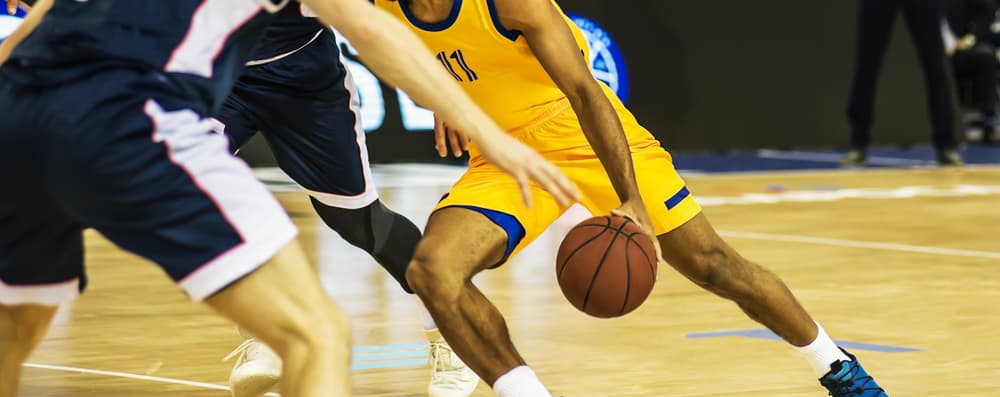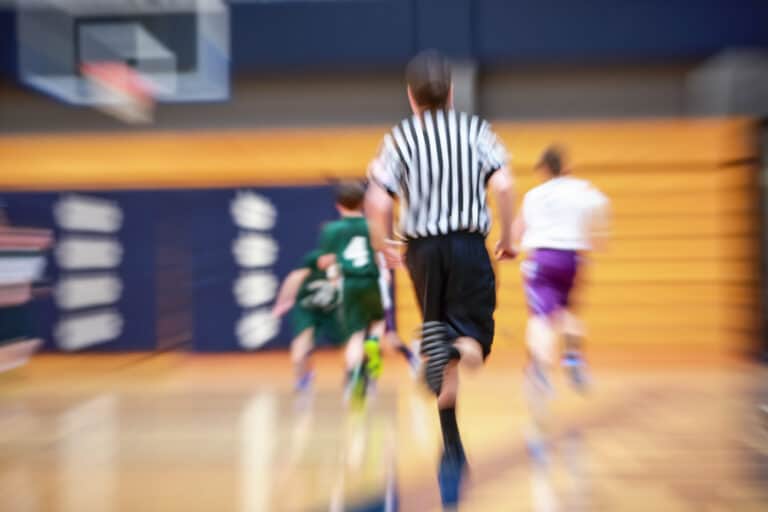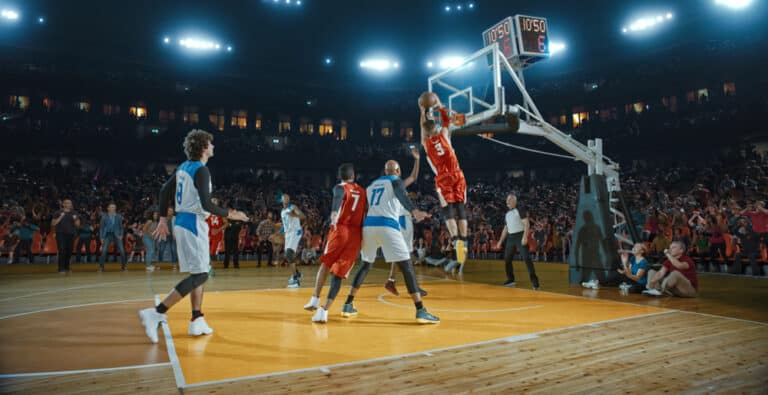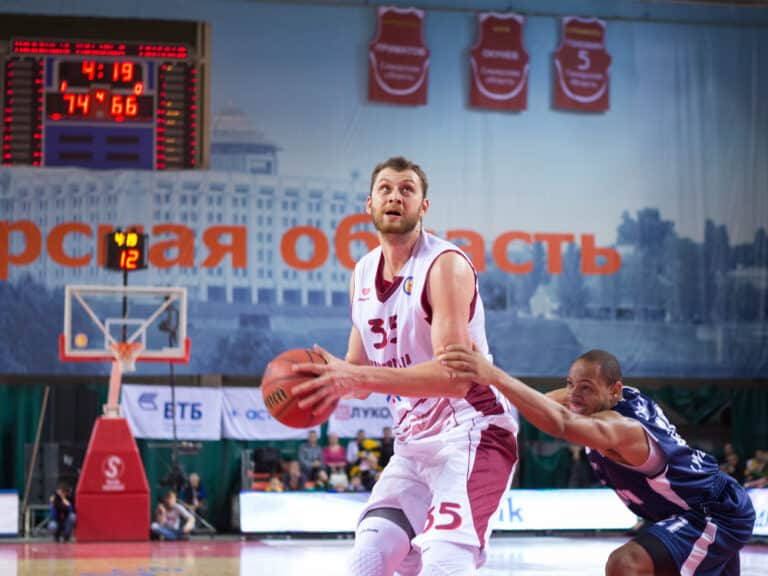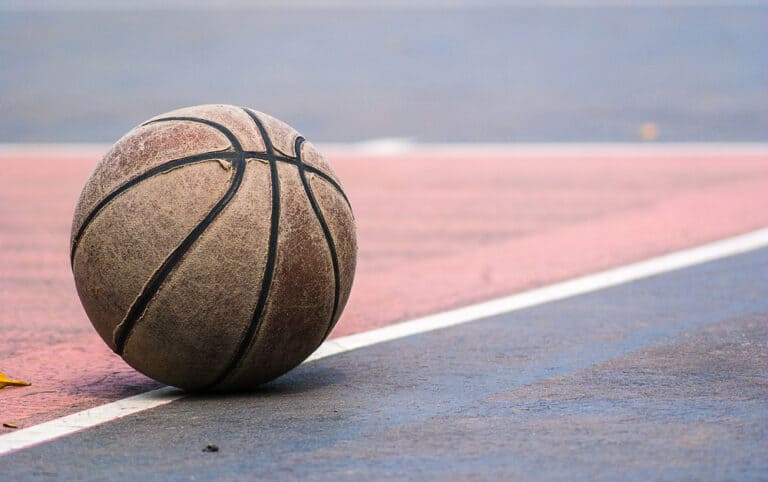Is Basketball A Contact Sport? (Here’s The Truth)
Basketball is a wildly popular sport in many countries, but there is much deliberation regarding the contact nature of the sport. Some people are sure that basketball is a non-contact sport, some state that basketball is a semi-contact sport, and many states that it is a contact sport and all you need to do is play the game to see why. This leads many to wonder if basketball is considered to be a contact sport.
Basketball is a contact sport by definition, as the players are in frequent bodily contact throughout the game. Basketball is not a collision sport such as rugby or ice hockey. Basketball has many rules governing contact, and illegal contact can have severe consequences.
There are several opinions on the issue, but the reality is that basketball is in a somewhat gray area regarding contact. Some contact is involved in the sport, but too much contact results in penalties and consequences. Let’s explore contact in basketball to determine if this is, in fact, a contact sport.
Is Basketball A Contact Sport?
Basketball is a fast-paced, high-action, high-intensity sport that millions of fans love. These players are among the best athletes in the world, and this sport is known to be rough at times. This leads fans to wonder if basketball is considered to be a contact sport.
The definition of a contact sport is a sport where the players come into necessary bodily contact with one another. This definition does not stipulate if this contact is a collision, a slam, or a crash of any kind; it only states that bodily contact is made for the sport to be considered a contact sport.
This is in contrast to non-contact sports such as tennis, where players never come into any bodily contact with each other during gameplay.
Basketball does involve some level of physical bodily contact between players. This contact is light and not considered to be dangerous or harmful, but basketball players are always in bodily contact with each other throughout the game.
Therefore, by definition, basketball is a contact sport. However, basketball is not a contact sport by most peoples’ understanding of the term.
Sports such as football and rugby come to mind when thinking of a contact sport, but these sports are known as collision sports rather than merely contact sports. Basketball is not a collision sport, but it is a contact sport.
There are legal forms of contact in basketball, and there are illegal forms as well. Drawing the line between these contact forms is what separates basketball from other contact sports.
Basketball is a contact sport, as it does involve contact between players, but that contact is not meant to redirect other players in any way, and it is, therefore, not a collision sport.
Are Any Collisions Or Contact Permitted In Basketball?
Basketball is considered to be a contact sport by definition, as the players are often in bodily contact with one another. However, this sport is not a collision sport and therefore has a strict definition of legal contact. What contact is permitted in basketball?
The truth is that there is legal contact in basketball. According to the rules and regulations of the NBA, certain types of contact are legal, especially when initiated by defensive players, and others are not. Illegal contact results in consequences that can be very severe, but legal contact does not interrupt gameplay.
No collision is legal in basketball, including pushing, rushing, tripping, and charging. No contact that impedes the progress of any player is permitted either, and contact that reroutes a player is considered an immediate personal foul. Body, hand, and forearm checks are also illegal.
However, contact that is permitted is applied in a non-aggressive or non-malicious way in the form of defensive play. For example, a defensive player can apply contact with their forearm to an offensive player who has the ball, provided they have their back to the basket and is below the free throw line.
This type of contact is permitted, and every type of standard permitted contact is outlined in the official NBA rules.
The rules are clear regarding personal fouls and flagrant fouls and specifically describe the type of contact that is permitted and what is not allowed at all.
Any type of contact that impedes gameplay, hurts another player, is malicious in intent, dangerous, harmful, or unsportsmanlike can be deemed a foul by the referees, and the player must receive the consequences for these fouls.
Why Is Basketball Not A Contact Sport?
Many fans and amateur players consider basketball to be a non-contact or a light-contact sport, but by definition, this is true. Why, then, do so many people consider this sport to be a non-contact sport?
So many people consider basketball to be non-contact because they are comparing the sport to others, such as American football, ice hockey, lacrosse, and rugby, which are all full-contact collision sports.
These sports permit the players to tackle one another, knock each other over, and otherwise collide with each other without hindering gameplay.
Basketball does not permit this type of contact and is therefore considered by many not to be a contact sport.
However, the truth is that basketball is a contact sport, as all players come into bodily contact with each other regularly throughout the game.
Sports that are highly dangerous and very physical such as combat sports, including MMA, are not considered to be contact sports but rather limited-contact sports, as the opponents are not touching each other all the time.
This then makes combat sports seem less dangerous than collision and full-contact sports due to the sport type, but the truth is that combat sports are far more dangerous than any field or court sports. The title that basketball is given as a contact sport does not mean that the game involves collisions and intentional injuries such as combat or collision sports, but it does mean that contact is involved in the sport.
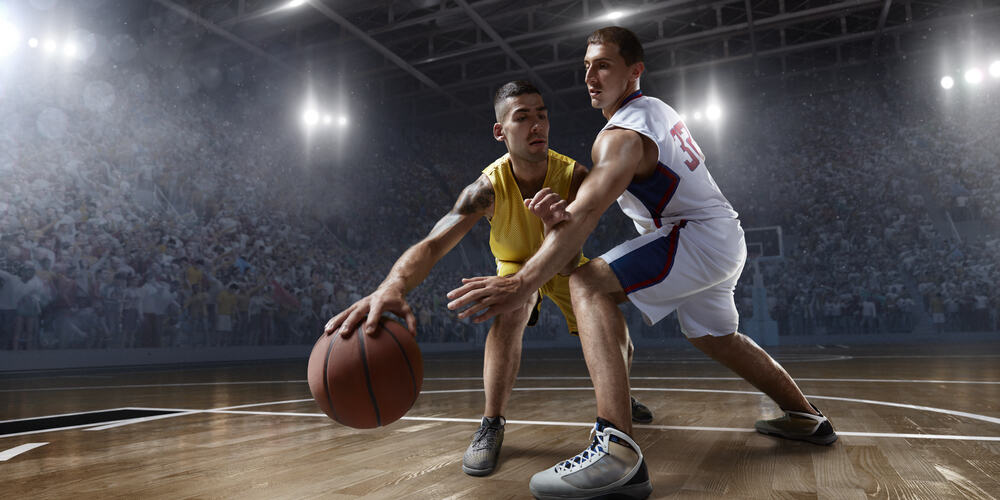
What Is Considered Contact In Basketball?
Contact in basketball is permitted, but there are illegal forms of contact that result in fouls and can even result in instant expulsion from the game. What is considered to be legal and illegal contact in basketball?
Legal contact in basketball is such that it does not harm, impede, or redirect a player. Players can place their hands on another player’s back. Forearm contact is permitted in defensive situations, as is contact with elbows.
Players will often use their bodies to block or cover other players, which is all legal in the game.
Illegal contact in the sport includes all tripping, rushing, shoving, pushing, charging, and any dangerous impacts or contact. Fighting, punching, and kicking are all strictly prohibited as well.
Any contact that is deemed illegal by the referees is considered a foul, and the player or team responsible must be penalized accordingly.
All forms of contact that are not illegal in basketball are governed by rules that must be adhered to as well. Some contact is legal in certain aspects of a play or specific locations of the court but not legal during other parts of the play or in other areas of the court.
All players must understand what is permitted and what is not based on where they are, what position they are playing, and what is happening in the game.
What Are The Consequences Of Contact In Basketball?
Basketball has some very complex and confusing rules regarding contact and when it is permitted. Some contact is allowed sometimes, and another contact is never allowed, and another contact is always allowed. Understanding the differences can be challenging, leading players to misstep and incur the consequences of contact.
The consequences of illegal contact in basketball can vary depending on the severity of the contact, the intention of the contact, where the contact is conducted, and how the contact happens.
Some forms of contact may incur only a free throw and ball possession to the other team, while other forms of contact may result in a player being instantly removed from the game. There are several consequences for contact in basketball, and the final judgment regarding the consequences is always passed by the referees in action.
The severity of the contact directly affects the consequences, and if contact happens by mistake, the referee may not stop gameplay at all. Severe contact can stop the game altogether, and contact such as fighting has the worst consequences of all.
Conclusion
There are many rules in basketball, and many of them govern contact. Some forms of contact in the sport are legal, while others are not, and the way. The players’ conduct themselves on the court determines how the contact is perceived by the referees.
Contact that is deemed illegal has various consequences depending on its severity. All basketball players must clearly understand the rules regarding contact to play the game well, and every player must follow the contact rules to avoid incurring punishments.
References
- https://www.gillettechildrens.org/your-visit/patient-education/contact-classifications-of-sports-and-activities
- https://basketballbuckets.com/is-basketball-a-contact-sport/
- https://www.rookieroad.com/basketball/coaching/contact/
- https://official.nba.com/rule-no-12-fouls-and-penalties/
- https://www.quora.com/How-is-or-isnt-basketball-a-contact-sport
- https://en.wikipedia.org/wiki/Contact_sport

